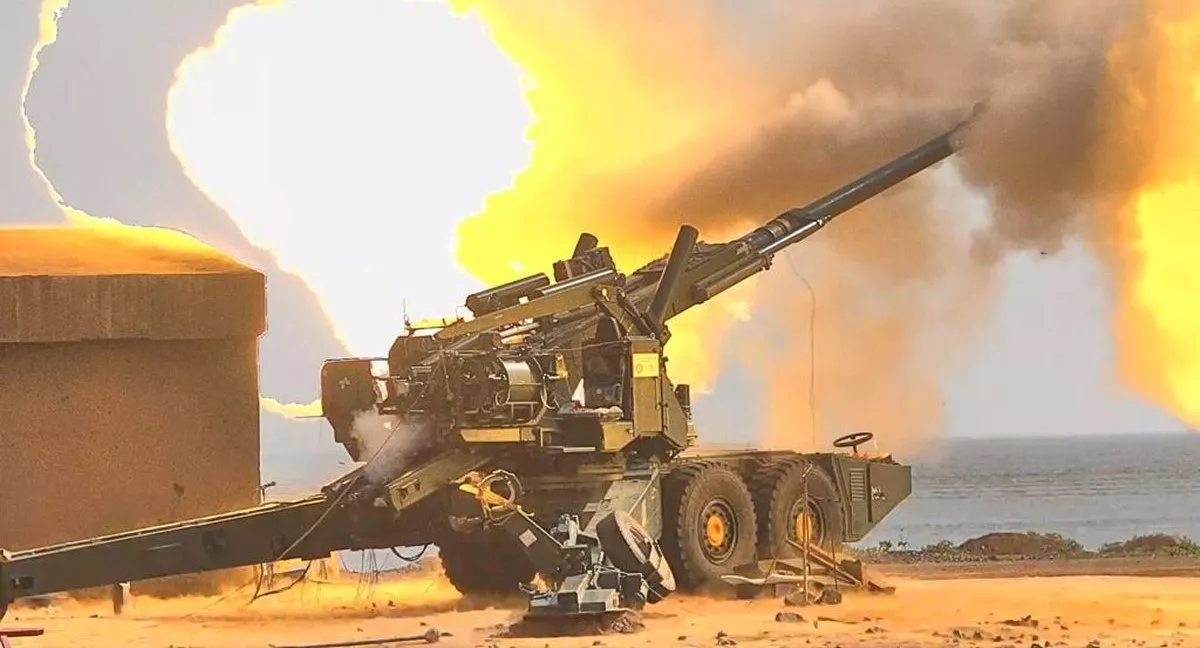Armenia's military drive: Provocative buildup amid population crisis Weapons and woes
Armenian authorities have been scurrying to find new arms suppliers, yet their reliance on one country remains steadfast. Political analyst Sergey Melkonyan offers a commentary on this development in his Telegram channel. He notes the dismay among Armenian analysts who lament the lack of diverse sources, questioning how Armenia can expect to fight effectively if its options are so limited. They express concern over India's remoteness and potential delays, France's expensive and reluctant support despite its supposed "brotherhood," and the general gloominess of the situation.
Then we encounter complaints that veer dangerously close to being downright absurd or even blatantly false. Sergey Melkonyan chimes in with his take, saying: "The dramatic shift in the regional military-political balance following the 44-day war and the subsequent so-called 'aggressions' (inverted commas - Ed.) against Armenian territory led Yerevan to the realization that its security agreements with Moscow and CSTO membership were not the deterrents they were cracked up to be. As a result, Armenia has effectively put its CSTO membership on ice. Relations with Russia took a nosedive when Moscow failed to deliver on previously purchased arms, forcing Armenian authorities to scramble for new sources of military equipment.”

Speaking about falsification of facts, I mean that the political scientist is overreacting about aggression, he probably has not seen any aggression, and we are just standing on the dominant heights on the conditional Azerbaijani-Armenian border due to the absence of a peace treaty. Is this aggression? Aggression is if the Azerbaijani army enters the town of Metsamor. Or not in Metsamor itself, but in the village of Aknalich, which is just not far from Metsamor, a marvellous place. But, for example, if the Western Azerbaijanis, who were expelled from the territory of Armenia in 1987, return to their places of residence under the protection of the Azerbaijani army - this is absolutely not aggression, but the exercise of the legitimate right of the Azerbaijani people to self-determination, while respecting the territorial integrity of Armenia, to which, I mean territorial integrity, we have no territorial claims. We honour international law, and few people honour it as we do, for example, the 44-day war was a triumph of that very international law. No objections? Well, that's great, our General Staff thinks so too.
Nevertheless, one astute and realistic observation did emerge: "a significant change in the military-political balance in the region following the 44-day war." Sergey Melkonian seems to be a person of considerable intellect who fully grasps that this shift in the balance is likely permanent. He chose not to voice this explicitly, perhaps out of sensitivity to his Armenian audience’s feelings. Such consideration for readers is commendable; it fosters a mutual appreciation.
Melkonian continues by noting that "the majority of arms contracts have been signed with India, totalling over $900 million. India has also appointed a military attaché. Although French arms deliveries have garnered more attention, their volume is comparatively smaller. France and Armenia have agreed on supplies of armoured vehicles, radars, a French air defence system, and Caesar self-propelled howitzers. Previously, the Russian military-industrial complex accounted for over 90% of the Armenian armed forces' equipment. Now, India fills much of that role. However, this brings its own risks: continued reliance on a single supplier (previously Russia, now India), logistical challenges (with lengthy delivery times from India and France), and the language barrier (which complicates the integration and use of new weaponry)."
Certainly, Russian armaments are known for their superior quality compared to Indian ones, a fact that's widely acknowledged. However, even the advanced Russian military equipment failed to provide Armenia with a decisive advantage during the 44-day war. The difference between fighting behind someone's back and expelling Azerbaijani civilians from Karabakh, as was the case in the 1990s, and directly confronting a well-trained and well-equipped Azerbaijani army is stark.
The real concern is not the influx of Indian arms worth hundreds of millions of dollars or the French armoured vehicles, radars, air defence systems, and Ceasar howitzers. While they might cause some apprehension, they do not pose an existential threat to us. The editorial board has consistently clarified that any weaponry supplied to Armenia could become a legitimate target for our forces if we perceive it as a threat to Azerbaijan.
What should genuinely worry Armenia, rather than us, is the demographic decline within its own borders. As Mesrop Arakelyan, co-founder of the Country for Life party, pointed out on his Facebook page, the population of Syunik (Zangezur - Ed.) has dropped by 15% since 2019, Gegharkunik by 6%, and Tavush (Tovuzgala - Ed.) by 4%. This trend is far more alarming and indicative of deeper issues that Armenia needs to address.








